Danish babies: Rolling royalty and tribal names
Denmark is a small country, and Danish people tend to think small things are good. Small cars. Small homes. Small ambitions when it comes to international team sports. But one thing in Denmark is never small – a baby carriage.
Danes seem to believe that a carriage (or pram) for a new baby should be roughly the size of a hotel room on wheels.
Inside, baby will be wrapped up warm with a fat feather blanket – even in the summer. There will also be room for pillows, books, toys, snacks, diapers and extra clothes in the giant baby carriage.
Danish babies are like rolling royalty. Everything they need is at their tiny fingertips.
A baby life of privilege
Generally, Danish babies live a privileged life. Denmark is a good place to be a baby. The food and the health care situation is good, and Mom gets four weeks at home before you are born and 12 weeks after. Then she and Dad can split the rest of a year of paid leave from work.
Danish parents make good use of this time. It’s lead to a small industry of baby music classes. Baby swimming. Baby yoga. And baby café meetings.
Someday you may be sitting in a café in Denmark and suddenly find yourself surrounded by four to six babies and their parents. This is because the Danish government puts together groups of women who live closely to each other and all have babies within a few days of each other.
These are called mother’s groups – and yes, they still are mostly mothers. They meet, they drink coffee, they discuss diapers and nap times, and then afterwards they all try to get their giant baby carriages on a single city bus. It’s a fight to the finish.
Anyway, if the mother’s group has the right chemistry, it can meet for decades. I know a woman whose kid is in his thirties, and she still meets with her mother’s group once a year.
Watch out for tribal names
Every baby born in Denmark gets an official birth certificate from the nearest church, even if the parents are not Christians. And Danish babies must have a first name that’s on the approved list. There’s a list of approved names in Denmark, a long list, and it has plenty of Muslim and African names on it, but you can’t be like a Hollywood star and name your child Pilot Inspektor – its against Danish law. You also can’t give a boy a girl’s name or vice-versa.
And if the baby’s other parent is a Dane, you’ll find that last names can be a drama, as well. Anybody who wants to can be a Hansen or a Nielsen, but there is also a list of last names that are restricted.
Since fewer than 2000 people in Denmark use these last names, they’re considered protected ‘tribal names’ (slægtnavn), or bloodline names. Many slægtnavn are related to places, particularly the old farm estates from the 18th and 19th century. Only certain members of the family are allowed to use the name, and depending on baby’s place in the family line, you may have to ask some of the older family members for permission. I know a guy whose great-aunt, on her deathbed, gave him permission to use the slægtnavn. He was thrilled. It was a big deal.
The CPR as the entrance card to the welfare state
Babies born in Denmark also get a CPR number right away, which identifies them as a participant in the Danish welfare state. CPR numbers include your birthday plus four additional numbers – even for girls, odd for boys.
Your baby needs a CPR to get on the waiting list for government child care. Child care is not free in Denmark, but it is heavily subsidized by taxes, and 97% of Danish kids go to government-run day care. Even the princes and the princesses of the royal family do. In popular areas like Copenhagen, there can be a long wait for a spot in a vuggestue, or cradle room.
The vuggestue is where 8-month-old Danes start meeting each other and building the lifelong friendships that make it so hard to meet anybody when you come to Denmark as an adult foreigner.
It’s all about ‘free play’
At vuggestue, the program is not very structured. Danes are great believers in what they call free play, which basically involves kids running around and doing whatever they feel like at the moment. Adults generally don’t interfere unless the kids are in a life-threatening situation.
Danes don’t really do competitive parenting: there’s none of this learning violin or learning to speak Mandarin before age 3. I tried to give my daughter piano lessons at age 4 – which she asked for! – and faced a lot of Danish disapproval. She should be having free play! everybody said. (It was only half an hour a week.)
Anyway, when playtime is done and it’s time for a nap, smaller Danish babies sleep outdoors. This old Viking tradition is considered very healthy, and good for their little lungs.
If it’s raining, babies sleep under an overhang, but if it’s just ordinary cold grey Danish weather, they’re still out there, even in the winter, strapped into their giant baby carriages. Usually under the same fat feather quilt they wore in the summer and a little hat, warm and comfy, nice and safe.
[icon name=”facebook-square” class=”fa-3x”] [icon name=”twitter-square” class=”fa-3x”][icon name=”instagram” class=”fa-3x”]
Buy Kay’s books about Denmark on Amazon, Saxo, Google Books, Apple Books, Barnes & Noble Nook, or via our webshop.
Image mashup copyright Kay Xander Mellish [current_year]
Read also:
Secrets of a non-Danish mom
Danish names: Why it’s bad to be Brian

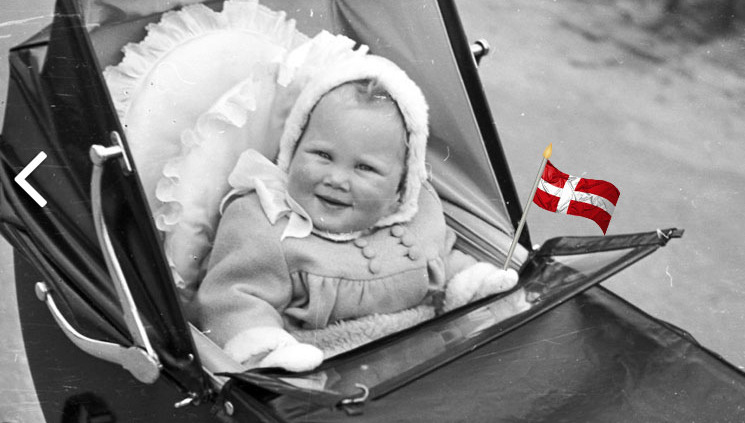
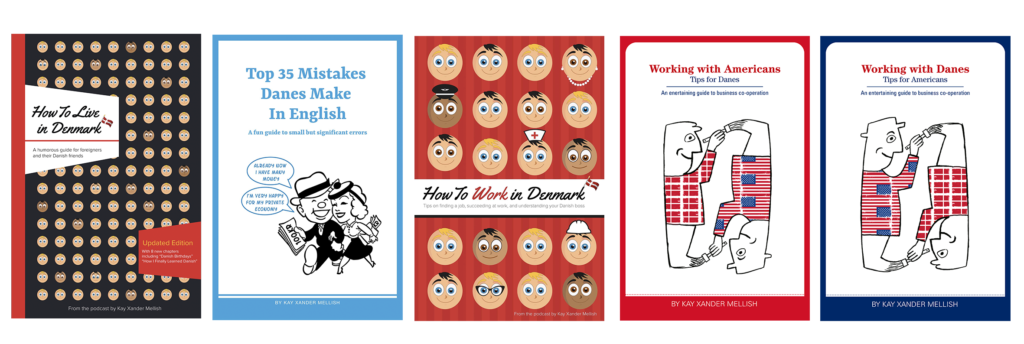
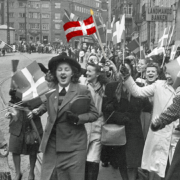
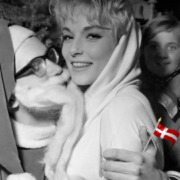
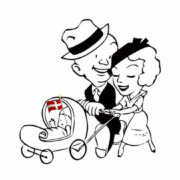
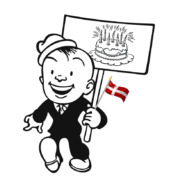


Haha my mom still meets with her mother group every two weeks, and has done so for 27 years : ).
You call it a viking tradition to sleep outside in a babystroller? The weather is not that in cold in Denmark, don’t people do that other places too? I know I slept outside in my babystroller in Greenland when we lived there 🙂